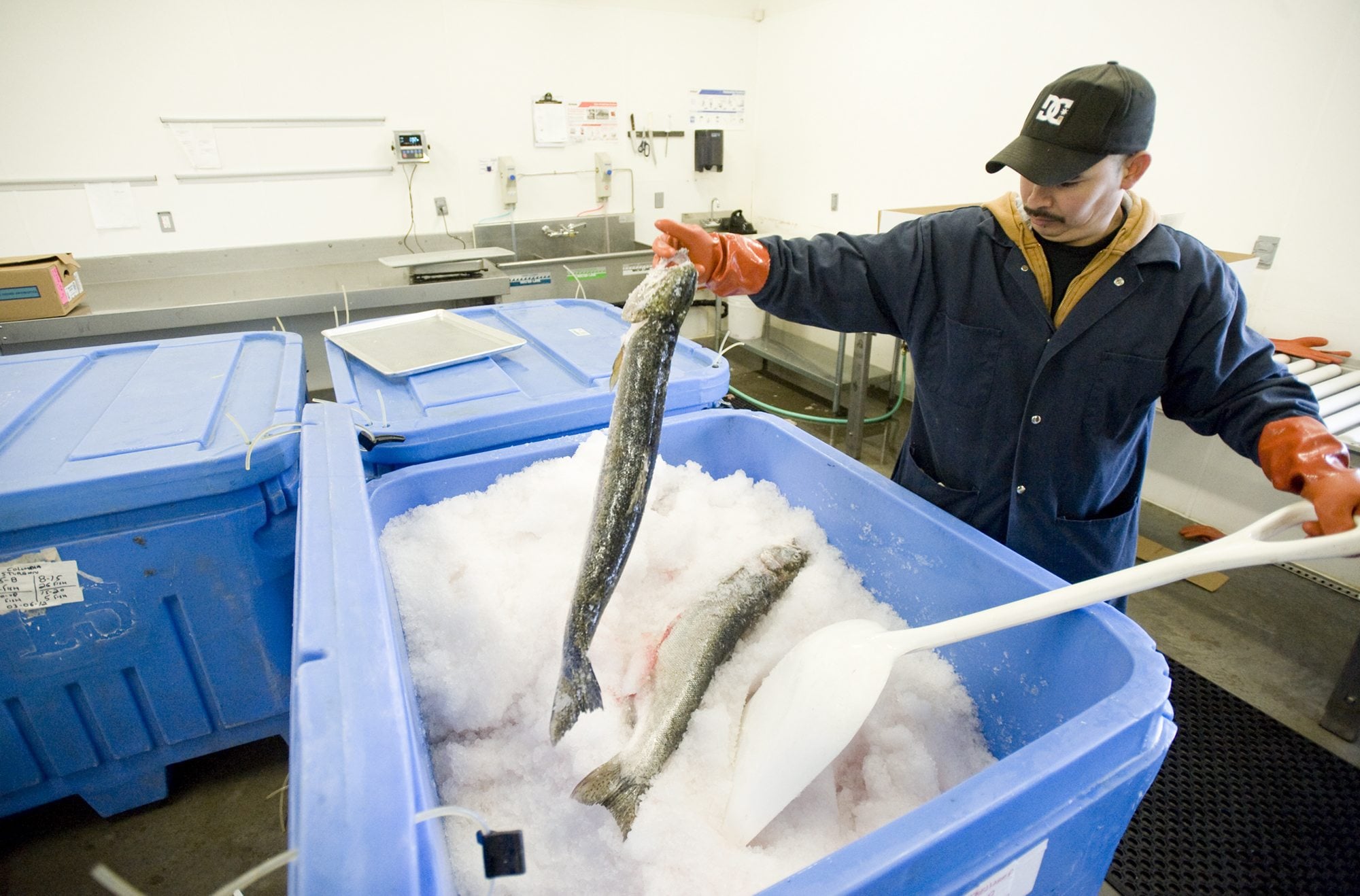Residents of the Port of Camas-Washougal’s district who own a home assessed at $200,000 pay about $82 in port property taxes annually. The port does not use its property tax revenue to pay for day-to-day operations. Rather, the port spends it on infrastructure and other capital projects. Other sources of port revenue include airport and marina fees, and lease agreements with industrial tenants.
It doesn’t have the gargantuan cargo-handling cranes or the broad international flair or the multimillion-dollar rail project of the Port of Vancouver.
But the Port of Camas-Washougal is nonetheless steadily enlarging its role in east Clark County’s business development.
In early 2011, for example, it put up the lion’s share of money to launch the Camas-Washougal Economic Development Association.
Led by former Camas mayor Paul Dennis, the nonprofit group already is working with multiple business clients.
Meanwhile, the port forges ahead with two major planning efforts: one seeks to prime a waterfront property for both redevelopment and public access; the other prepares the largest industrially zoned, undeveloped parcel in Clark County for new employers.
Suffice it to say, it’s an ambitious time for the ostensibly sleepy port district — known for its pleasure boating, rustic airport and public gathering spots.
But it’s no surprise to those who’ve done business with the port, including John Anderson, president of Foods in Season, which once leased and now owns space at the port’s industrial park.
“They’ve just been a really good partner and done everything they can to help us grow,” Anderson said.
David Ripp, the port’s executive director since late 2007, is optimistic about what the port can do in an improving economy.
“When I came on, the market was crashing, so we were limited in what we could do,” he said. “Now, you’re seeing a lot more activity. … We can walk the walk and get moving on projects.”
Improved climate
The port, established in a 1935 special election, has come a long way from its rural beginnings to now serving tens of thousands of residents in its geographic boundaries. It’s developed several key assets, including a 560-acre industrial park (of which it owns roughly 200 acres), the 79-hangar Grove Field Airport and a 350-slip marina. And it’s financially sound, fueled by operating revenues of $4.6 million and a reserve fund of $8.5 million.
But it’s had its bumps along the way, including in the late 2000s, when plans for a mixed-use waterfront development project fell apart. In 2008, a state auditor’s report said the port signed a development agreement for the RiverWalk project without holding enough public discussion.
The controversy influenced two port election cycles in which all three seats on the port’s board were won by challengers — current commissioners Bill Ward, Mark Lampton and Bill Macrae-Smith, each of whom made public involvement a priority during their campaigns.
Richard Hamby, a longtime Washougal resident and a building contractor, has closely followed the goings-on at the port. He said the current commissioners have kept their promises to increase transparency and to engage the public in making decisions.
And the commissioners, along with Ripp and other port staff, have developed a cooperative political and administrative environment, Hamby said.
“In the broadest sense, it’s hugely improved in the last four or five years,” he said. The “port commissioners do see economic development as their key role in the community.”
Keeping promises
Lampton said the port’s strategic plan, adopted in December 2010, now guides all of the port’s work. It calls for everything from targeted investments in infrastructure to strengthened ties with the cities of Camas and Washougal.
“We’ve lived up to every word of it,” Lampton said.
That’s a bold statement. But there’s evidence to back it up.
Take the Camas-Washougal Economic Development Association. In May 2011, east county leaders announced Dennis and his private consulting firm — Cascade Planning Group — would lead CWEDA, a creation of the Port of Camas-Washougal and the cities of Camas and Washougal.
In total, the port and the two cities have allocated $200,000 to fund the nonprofit group, with the port setting aside $100,000 (money it routed to CWEDA from a staff position it cut), and the cities each kicking in $50,000.
Dennis said he’s at various stages in his work with a couple dozen business clients. And he’s already scored some victories for business development.
Through a series of well-placed calls to state and local officials, Dennis helped Sapphire Materials Company, LLC at the Port of Camas-Washougal Industrial Park obtain a sewer discharge permit that had been holding up the company’s operations, he .
Gov. Chris Gregoire “made a couple phone calls to (the Washington State Department of) Ecology,” Dennis said, and “what was a nebulous permitting process became a very clear-cut and concise process.”
Now, Sapphire Materials, which grows sapphire crystals for multiple uses, including for light-emitting diode technology, is getting some of its product certified and tested for customers who might want to buy it, according to Dennis.
The company is located at the former Saint-Gobain Crystals property. Saint-Gobain shut down in 2009, eliminating 58 jobs.
Although Dennis did not have exact numbers, he said he knows Sapphire Materials has hired some former Saint-Gobain employees.
Land-use planning key
As Dennis continues his work, the port pushes ahead with its land-use initiatives.
Ripp, the port’s executive director, said a study shows that the port has the capacity to handle stormwater runoff from development of Steigerwald Commerce Center, 120 acres of undeveloped, industrially zoned land the port owns west of Steigerwald Lake National Wildlife Refuge and just north of the Columbia River.
Ripp said he believes it’s the largest chunk of industrially zoned property held by a single owner in Clark County.
And clearing the stormwater-runoff hurdle paves the way for the port to move forward with securing a development agreement to eventually install curbs, gutters, water and sewer lines, and roads to entice developers to build, Ripp said.
“If everything works out, we could be pushing dirt by August,” he said.
Meanwhile, the port is helping lay the groundwork to spur development of two other properties.
One is the 25-acre former Hambleton sawmill site along Washougal’s waterfront. The port is leading efforts to size up the potential of the property, including securing a grant to investigate the site’s environmental cleanup issues and gather input from the community about its redevelopment possibilities.
Retail developer Killian Pacific has submitted a written offer to buy the 25-acre property from the Hambleton Bros. Lumber Co. pending an evaluation period.
And the Vancouver-based Killian Pacific also has filed an application for a development agreement with the city of Washougal that’s intended to keep the site zoned as commercial highway and maintain current development regulations.
Likewise, the port has submitted a similar application for developing 14 acres it owns immediately east of the Hambleton property.
Ripp said that, along with development of both sites, a big goal of the port is to ensure public access along the waterfront.
Ripp said the port also is looking at acquiring properties within the city limits of Camas. He declined to discuss details but said the port’s idea — similar to its approach to the Steigerwald property — is to invest in and promote development of Camas parcels that are otherwise struggling to attract private-market interest.
Lampton, the port commissioner, said about 98 percent of the port’s assets are within the city limits of Washougal. The time is right to explore opportunities to boost economic development by “aggregating some land” in Camas, he said.
Boosting development
The port has historically played a role in acquiring, leasing and selling real estate. With its industrial park, it owns roughly 150,000 square feet of space, roughly 97 percent of which is leased.
But over the years, the port also has sold land to companies.
Anderson, the president of Foods in Season — a family business that ships sustainably harvested fish to high-end restaurants and grocery stores across the country — purchased his company’s current 12,000-square-foot site from the port about four years ago.
Anderson said the port’s willingness to sell was crucial. He and his wife, Wanda, want to pass the business on to their children, he said, and owning the land ensures it will someday happen.
“It also allows us to grow,” Anderson said.
The company, which employs about 28 full-time people and adds up to 15 seasonal workers as needed, plans to hire another salesperson next month.
It also plans to break ground this summer on a new, 8,500-square-foot facility for freezer and cooler space.
Ripp said the port strives to build good relationships with companies such as Foods in Season, and it’s been lucky, too, to be able to keep its industrial park filled with tenants despite the economic turmoil that began four years ago.
And, if the port has its way, its ambitious, long-term plans for economic development will come to fruition as the economy gathers strength in the months and years ahead.
While there are no guarantees that the broader market will cooperate, Ripp said, the port has by no means stood on the sidelines waiting.
“That’s one of our goals — to kick-start economic development and create jobs,” he said.
Aaron Corvin: http://twitter.com/col_econ; http://on.fb.me/AaronCorvin; 360-735-4518; aaron.corvin@columbian.com.




